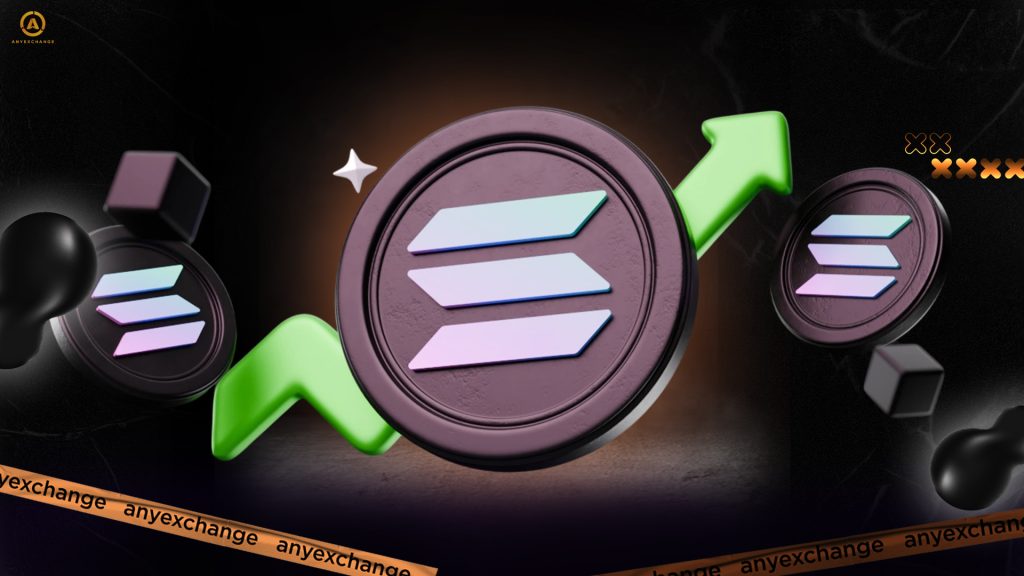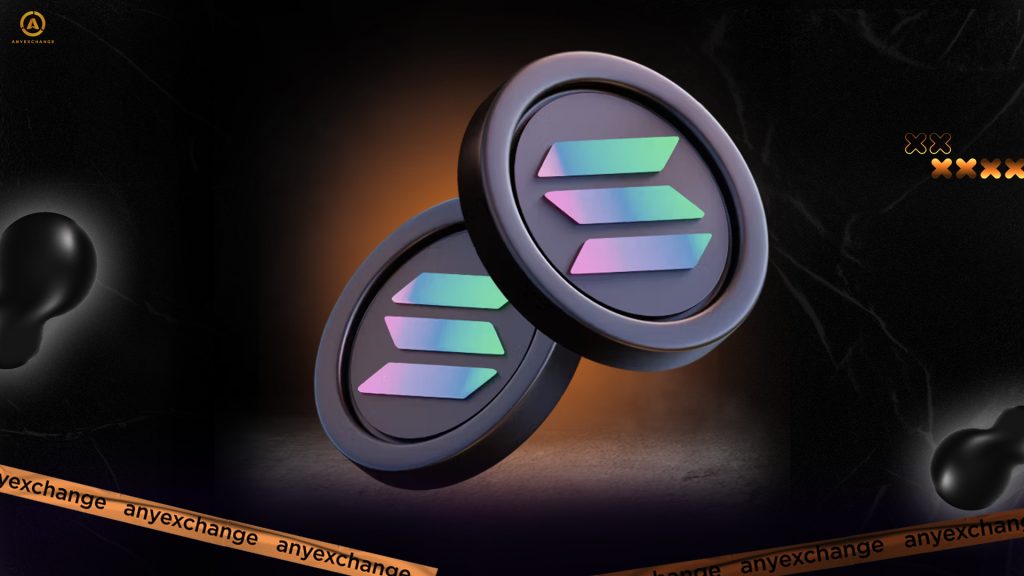
The Solana blockchain is one of the most talked-about projects in the crypto market. It positions itself as a high-performance solution for scalable, low-cost transactions. In an era where speed and availability are key to the success of digital platforms, Solana processes up to 65,000 transactions per second (TPS) with fees rarely exceeding $0.01. This combination makes the platform particularly attractive to developers and users of decentralized applications.
Solana is often compared to Ethereum, the smart contracts giant. Despite its achievements, Ethereum faces congestion and high costs. Solana offers an alternative with blockchain innovations that provide additional opportunities for mass adoption, especially in areas such as decentralized finance (DeFi), the non-fungible token (NFT) market, and crypto-gaming.
This article examines how the Solana ecosystem uses its architecture to evolve, attract institutional investment, and gain a wide audience in 2025.
What is Solana?
The project was founded in 2017 by Anatoly Yakovenko, a former Qualcomm engineer. Yakovenko’s vision was to create a scalable blockchain systеm that could support tens of thousands of transactions per second without compromising decentralization or security. The first blockchain on the network was created in March 2020, and the Solana blockchain has seen impressive growth since then.
The platform’s main advantage is its high processing speed and low fees, which are especially important for mass adoption. Solana’s scalability ensures fast and stable operation, even under high load. On average, a transaction on the Solana network costs less than one cent, making it more affordable than Ethereum, where commissions can reach several dollars.
According to CoinMarketCap, as of May 2025, the SOL cryptocurrency holds a strong position among the top 10 digital assets, with a market capitalization exceeding $75 billion.
Technical Features of Solana

One unique feature of the Solana blockchain is its implementation of the Proof-of-History (PoH) mechanism. This innovative concept allows for the cryptographic capture of the order of events over time. This provides instant synchronization between nodes and reduces transaction processing latency.
PoH works in tandem with Proof-of-Stake (PoS), a green validation method in which validators secure the network and are rewarded with Solana tokens. This ingenious combination enables optimal blockchain performance without excessive energy consumption.
The blockchain’s technical architecture also includes several internal components that enhance its performance and efficiency:
- Tower BFT, a fault-tolerant consensus mechanism.
- Gulf Stream is a transaction forwarding protocol that reduces the load on the mempool.
- Sealevel is a systеm that processes smart contracts in parallel.
- Turbine is a data distribution protocol that accelerates block propagation.
These components work synergistically to deliver up to 65,000 transactions per second (TPS) with a latency of less than one second. This enables the creation of Solana DApps that are fast and stable and can support thousands of concurrent users. Because of this, the Solana ecosystem is growing rapidly, with major DeFi protocols, NFT platforms, and crypto gaming projects being developed here. For end users, this means lightning-fast Solana transactions and comfortable interaction with Web3 products. There is no need to wait for confirmations or overpay for commissions. Thus, Solana’s technical features directly contribute to its mass adoption.
Solana Ecosystem: DeFi, NFT, and DApps

With its high speed and low commissions, the platform has become an ideal environment for the rapid scaling of projects and user engagement.
In the DeFi segment, protocols such as Serum, Orca, and Raydium have gained the most popularity. These platforms allow users to trade tokens, provide liquidity, and earn revenue. As of 2024, the aggregate TVL (Total Value Locked) in Solana DeFi protocols exceeded $10 billion, establishing the network as one of the largest decentralized finance hubs outside of Ethereum.
Solana is the second most popular after Ethereum in the NFT market. Platforms like Magic Eden allow NFTs to be issued and traded at a low cost and high speed. This makes Solana attractive to both artists and large collectible projects aimed at a mass audience.
Solana DApps in the crypto-gaming field deserve special attention. Games like Star Atlas and Web3-based projects offer users unique gameplay that combines high-quality graphics with an advanced blockchain economy. Social networks and next-generation messengers based on Solana Web3 are also under development.
Successful projects in these areas prove the platform’s technological maturity and serve as a catalyst for further mass adoption.
Solana’s advantages for mass adoption
- The Solana blockchain’s main advantage is its high speed, which allows it to process millions of transactions without congestion or delays. This is especially important as Web3 products become part of everyday life.
- Affordability is another strong argument for Solana. Low fees make the platform profitable not only for professionals but also for millions of end users. Because of this, Solana can successfully handle small transactions, micropayments, and real-time user interactions.
- Its position is strengthened by integration with traditional finance: partnerships with giants such as Visa and Shopify confirm its relevance in the global financial ecosystem.
- The expected approval of the Solana ETF in 2025 could reinforce institutional investor interest and further develop the ecosystem.
Challenges and risks of Solana
Despite its clear benefits, the blockchain has faced challenges.
- Between 2021 and 2022, the network experienced multiple outages, raising concerns among the community and investors. These outages were primarily caused by network congestion due to bots and NFT spam attacks, as well as errors in transaction processing when user activity surged. Over-competitive DeFi protocol attacks and NFT drops, in particular, caused nodes to run out of time to process incoming traffic, resulting in unsynchronization and forced network restarts. However, from 2023 to 2024, developers implemented several upgrades, including redesigning the validator software, introducing prioritized transaction queues, and updating protocols such as QUIC and Stake-weighted QoS. These upgrades have greatly improved the network’s stability and resilience.
- One controversial issue remains: the degree of centralization. Compared to Ethereum, Solana has a smaller number of validators, making it more vulnerable to potential scrutiny. Additionally, the technical requirements for running nodes are quite high, limiting the participation of those with fewer resources.
- Furthermore, there is increased competition. Ethereum, with its Layer 2 solutions, and new blockchains, such as Aptos and Sui, offer their versions of blockchain innovation, making the market increasingly saturated and unpredictable.
- Finally, regulatory risks remain a source of uncertainty. Increased regulation of decentralized finance (DeFi) and non-fungible tokens (NFTs) in different countries could affect projects in the Solana ecosystem, especially if they interact with fiat currencies or traditional financial structures.
Solana compared to other blockchains

To understand Solana’s uniqueness, it is worth comparing it to other major players in the market.
Ethereum, for example, offers maximum decentralization and a rich ecosystem but has problems with high gas costs and insufficient speed. Despite the development of Layer 2, Ethereum still lags behind Solana in blockchain performance.
Binance Smart Chain (BSC) offers low fees but is criticized for being overly centralized and dependent on its parent corporation, Binance.
Cardano emphasizes a scientific approach and eco-friendliness; however, its throughput is significantly lower, and application launches are slower.
Against this backdrop, Solana stands out as a universal solution. Its balance of speed, cost, and functionality meets the needs of developers and end users alike. With its unique architecture, Proof-of-History, and widespread use in Web3, Solana is one of the most practical and user-friendly platforms for developing next-generation applications.
Solana’s Future in 2025
Against the backdrop of network stabilization and technical updates, Solana is gaining positive momentum. One of the main expectations is the final resolution of fault tolerance issues. Protocol updates, validator architecture modernization, and Proof-of-History improvements pave the way for more stable operation, even under high loads.
The Solana ecosystem continues to grow rapidly, particularly in DeFi, crypto gaming, and Web3 applications. The launch of new Solana decentralized applications (DApps) and the growing popularity of gaming projects, such as Star Atlas and Aurory, confirm interest from developers and audiences alike.
It is important to note the integration with meta-universes. High speeds and low fees enable the creation of full-fledged virtual worlds with large numbers of users and transactions. For instance, the Star Atlas project utilizes the Solana blockchain to develop a large-scale space metaverse with an economy based on NFTs and tokens. Portals offer interactive 3D spaces directly in the browser, paving the way for Web3 social platforms. The Solice metaverse combines VR experiences with tokenized assets, and Synergy Land shows how game mechanics and NFTs can be seamlessly integrated into multiplayer worlds.
Successful collaborations with major technology corporations play a significant role in development. For instance, Solana’s partnership with Google Cloud provides cloud infrastructure and encourages the participation of other institutional players. Amid expectations of Solana ETF approval, investor interest continues to grow, strengthening the position of the SOL cryptocurrency in the market.
Given the current momentum, SOL has a good chance of becoming one of the top five cryptocurrencies by market capitalization in 2025.
Conclusion
Solana is firmly establishing itself as one of the highest-performing blockchains by offering developers and users a unique combination of high speed, scalability, and low fees. Thanks to its innovative architecture, the blockchain demonstrates a significant technological edge over its competitors.
The ecosystem is actively growing with thousands of projects, ranging from decentralized applications (DApps) to infrastructure solutions. Major partnerships and growing institutional interest create a positive backdrop for future development.
Solana is more than just a fast network. It is the foundation for blockchain innovation and the next generation of Web3 infrastructure. It is worth keeping a close eye on its development and evaluating its investment opportunities in 2025.
Thank you for your attention to our article. Invest safely and profitably!
AnyExchange is a cryptocurrency exchanger with which you can convert digital assets at the most favorable rate. The platform also offers fast and secure money transfers worldwide.
FAQ
What is Solana?
Solana is a high-speed blockchain focused on scalability, low-cost transactions, and supporting complex decentralized applications. Solana uses a unique Proof-of-History consensus algorithm.
Why is Solana faster than Ethereum?
Thanks to parallel processing and time synchronization via Proof-of-History and other innovative technical solutions, Solana processes up to 65,000 transactions per second.
Which projects run on Solana?
The biggest DeFi projects are Serum, Raydium, and Orca. In NFTs, Magic Eden. In gaming, there is Star Atlas and Aurory. Social networking and Web3 applications are also being developed.
What are the risks of investing in SOL?
Possible risks inсlude network shutdowns, regulatory pressure, and high competition.
What are Solana’s prospects in 2025?
Ecosystem growth, network stabilization, expanded partnerships and possible ETF approval could make Solana one of the leaders in terms of mass adoption and capitalization potential.






